Science Daily News | 19 May 2023

Views (227)
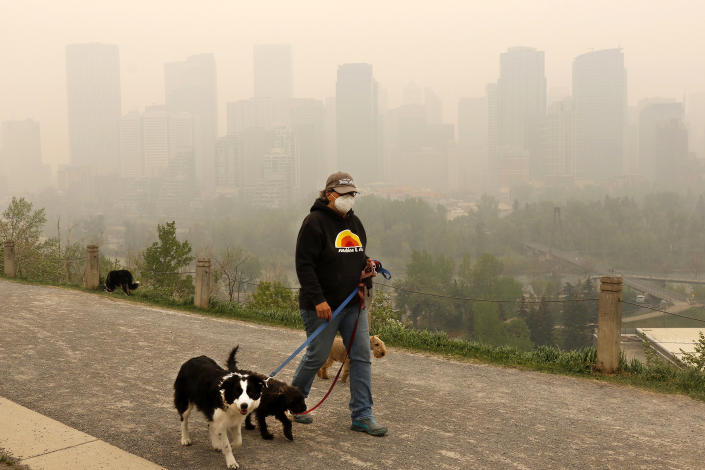
Incredible shrinking lakes: Humans, climate change, diversion costs trillions of gallons annually
Climate change 's hotter temperatures and society's diversion of water have been shrinking the world's lakes by trillions of gallons of water a year since the early 1990s, a new study finds. A close examination of nearly 2,000 of the world's largest lakes found they are losing about 5.7 trillion gallons (21.5 trillion liters) a year. Authors also cited a third reason they called more natural, with water shrinking because of rainfall pattern and river runoff changes, but even that may have a climate change component.
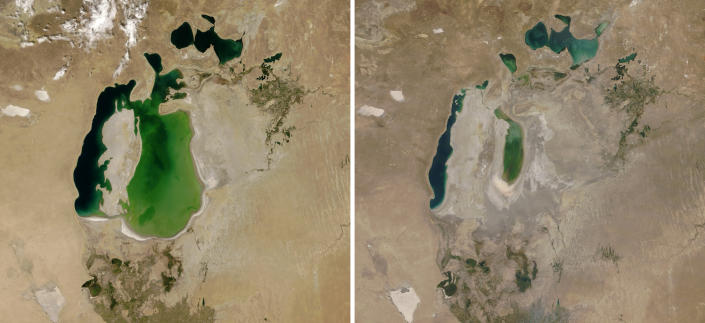
A close examination of nearly 2,000 of the world's largest lakes found they are losing about 5.7 trillion gallons (21.5 trillion liters) a year. That means from 1992 to 2020, the world lost the equivalent of 17 Lake Meads, America's largest reservoir, in Nevada. It's also roughly equal to how much water the United States used in an entire year in 2015.
Authors also cited a third reason they called more natural, with water shrinking because of rainfall pattern and river runoff changes, but even that may have a climate change component. That's the main cause for Iran's Lake Urmia to lose about 277 billion gallons (1.05 trillion liters) a year, the study said.
The declining lakes don't mean places are suddenly going to go without drinking water, but it may lead to more competition for lake water, which is also used in hydroelectric power and recreation such as boating, the study authors said.
“More than half of the decline is primarily attributable to human consumption or indirect human signals through climate warming,” said study lead author Fangfang Yao, a climate scientist at the University of Colorado.
The diversion of water from lakes — a direct human cause of shrinkage — is probably larger and more noticeable because it is “very acute, very local and it has the capability of really changing the landscape,” said co-author Ben Livneh, a University of Colorado hydrologist.
Even areas that are getting wetter because of climate change are losing lake water because hotter air is sucking more moisture out of the lakes. And that means more water in the air, which can fall as rain or snow but “may end up falling as rain far away, outside the basin where it evaporated or even over the ocean," Livneh said in an email.
Yao, Livneh and colleagues used almost 30 years of satellite observation, climate data and computer simulation to figure out what's happening to lakes and found more than half of them have shrunk so much that it is statistically significant and not random.
Another problem is that lakes are filling with sediment or dirt from upstream rivers.
Scientists have long known about the problems of climate change, diversion and sedimentation, “however the complete quantification of water storage variations for large lakes that Yao and colleagues provide is new” and it creates "a much more complete picture'' than past research has, said University of North Carolina hydrology professor Tamlin Pavelsky, who wasn't part of the study.
“I’m generally most worried about lakes that are ecologically important and in populated areas without a lot of other good sources of water,” Pavelsky said in an email. “Lake Urmia in Iran, the Dead Sea, the Salton Sea ... these are all worrisome.”
It's likely to get worse as society looks for more water and more reservoirs with a growing population and a warmer Earth, said UCLA climate hydrologist Park Williams, who wasn't part of the study.
___
___
___
El Ninos are far costlier than once thought, in the trillions, study says -- and one's brewing now
The natural burst of El Nino warming that changes weather worldwide is far costlier with longer-lasting expenses than experts had thought, averaging trillions of dollars in damage, a new study found. An El Nino is brewing now and it might be a big — and therefore costly — one, scientists said. El Nino is a temporary and natural warming of parts of the equatorial Pacific, that causes droughts, floods and heat waves in different parts of the world.
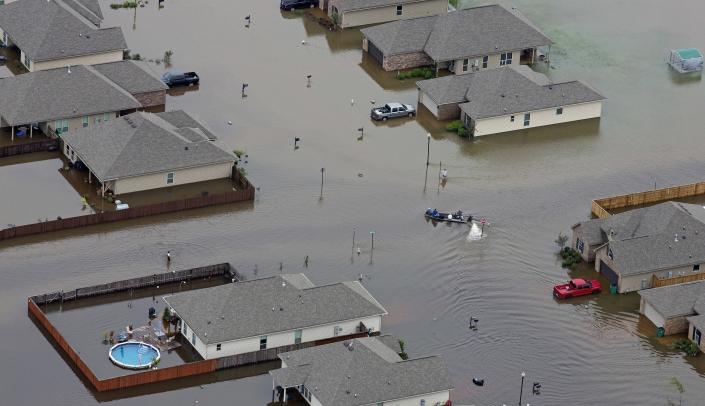
WASHINGTON (AP) — The natural burst of El Nino warming that changes weather worldwide is far costlier with longer-lasting expenses than experts had thought, averaging trillions of dollars in damage, a new study found.
But the Dartmouth team said they are looking at more than the traditional costs and for longer time periods.
“We have this sense that El Nino is a really big hammer that hits the Earth system every few years. But we didn’t have as much of a handle on its sort of macroeconomic implications, both what that means just on a year-to-year basis and what that might mean with future global warming,” said study lead author Christopher Callahan, a climate impacts researcher at Dartmouth.
“Economies bear the scars of El Nino for a decade or more and potentially forever,” said study co-author Justin Mankin, a Dartmouth climate scientist.
The economic scars are the diversion of spending away from technology and innovation toward recovery and rebuilding efforts, Callahan said. It's about opportunities lost while digging out of the El Nino hole.
The way Callahan and Mankin did this was to simulate a world without an El Nino event and look at the global difference in costs, compared to the global gross domestic product, Mankin said.
El Nino's biggest impacts generally hit in the northern winter, but in the summer it reduces hurricane activity in the Atlantic, studies show. It makes it wetter across much of the U.S. South and West, Peru, Uruguay and Argentina, some of Southeast Asia, and a bit of east central Africa. It makes it drier in southeast Africa, southern Asia, northern Australia and the Amazon and often leads to increased wildfires in those areas. It's warmer in much of Asia, the American Pacific Northwest and Australia.
El Ninos occur on average about every three to five years and vary in strength, according to the U.S. National Oceanic and Atmospheric Administration. The last strong El Nino was in 2016.
“Our economies are poorly adjusted and poorly adapted to the climate variability that we have right now," Mankin said.
Neither Mankin nor Callahan are full-time economists. Economists who looked at their study were not impressed, but other climate scientists were.
Mankin and Callahan said their study looked at the globe as a whole, not individual countries.
In those places hurt, El Nino economic damage evaporated quickly contrary to what the Dartmouth team said, Mohaddes said. He also found the Dartmouth estimates of damage too big, with their estimates coming close to the economic cost of the Great Recession of 2007 and 2008.
Climate economist Gary Yohe at Wesleyan University in Connecticut said “the enormous estimates cannot be explained simply by forward-looking accounting,” calling them not credible.
However, Marshall Burke, an economist and environmental policy professor at Stanford University, said the Dartmouth scientists "make a compelling case that this has really slowed growth in severely affected countries like Peru, and resulted in trillions of (dollars) of lost economic output around the world.”
“This paper has certainly made me much more worried about the upcoming and likely large El Nino,” Burke said in an email.
Michael McPhaden, a NOAA oceanographer who studies El Ninos, said he has long thought damage estimates of El Nino were way too low, and more important the “big loser during El Nino is the global south,” which are poorer nations that are hit the hardest.
“The economic impacts of the El Nino that is predicted for later this year will depend on how strong it is,” McPhaden said in an email. Big “monster El Ninos” like those in 1997-98 “can be hugely damaging with lingering effects that carry over into following years. On the other hand, if it turns out to be a garden variety El Nino, the consequences may be more muted and the recovery time shortened.”
___
___
___
Net zero boost as carbon capture licences awarded
Lincolnshire is to play a leading role in the UK's carbon storage plans, officials say.
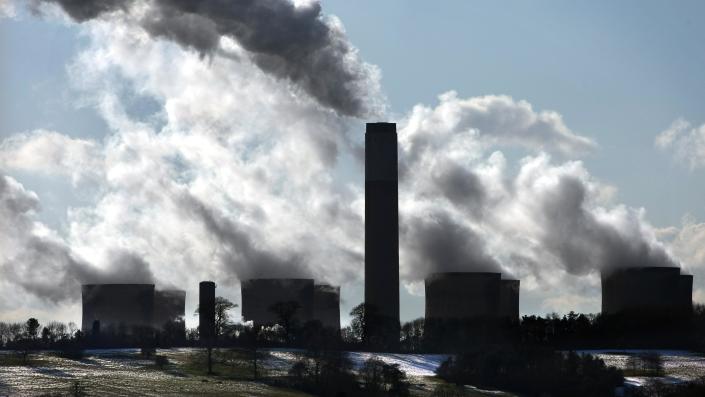
Regulators have awarded the first 20 licences for seabed sites for storing captured carbon, including nine off the Lincolnshire coast.
The technology, to remove climate-damaging gases from industrial sites, is seen by many scientists as important in reducing emissions to net zero.
The new licences have been awarded to 12 different companies.
Officials said the new sites could store 10% of total annual UK emissions.
Andy Brooks - director of new ventures at the North Sea Transition Authority (NSTA) - said: "Nine of the 20 licences that have been awarded are either partially or wholly off the coast of Lincolnshire.
"So, Lincolnshire will clearly play a really large part in the future of this industry."
The 20 licences, which also include sites near Aberdeen, Teesside and Liverpool, cover an area of 10,000 square kilometres - roughly the size of Yorkshire, according to Mr Brooks.
"We estimate the awards offered today could store about 10% of total annual UK emissions," he said.
However, he added that up to 100 stores would be needed to meet the government’s ambitions to reach net zero by 2050.
The first storage sites could be operational in six years.
Lord Callanan, Minister for Energy Efficiency and Green Finance, said: "These new licences... will develop our most comprehensive picture yet of the UK's carbon capture and storage potential."
He added that as well as cutting emissions, the move would create "thousands of skilled British jobs".
Offshore-energy robotics test centre opens in Blyth
The DARE centre in Blyth will test vehicles, robots and drones used in the offshore energy sector.

A test centre for robotic products intended for use in the offshore renewable energy market has opened.
The Digital, Autonomous and Robotics Engineering Centre (DARE), in Blyth, is the first of its kind in the UK.
It will help developers and researchers trial products including underwater vehicles, robots or drones.
The government says technology tested at the £3m centre in Northumberland, which it has funded, will help triple offshore wind capacity over a decade.
Graham Stuart, minister for energy security and net zero, said advances in robotics "can reinforce the UK's position as the world leader in offshore wind, make us even more competitive and keep turbines turning".
He said the new centre "will increase the safety and productivity of our highly skilled offshore wind technicians, lower costs and contribute both to lower consumer bills and energy security".
A robotics assembly bay, airborne robotics test zone, control rooms and three dry docks make up the DARE centre.
Three companies, Enshore Subsea, BeeX, and Aspira Aerial Applications, have said they will test their products at DARE.
Aspira is developing a specialist turbine-blade spray coating, that will be applied via drones, to remove salt build up and improving the turbine's efficiency.
It said the centre would be "pivotal" for providing opportunities to "perform real world testing" of "bespoke drones".
Helen Golightly, chief executive of the North East LEP (Local Enterprise Partnership), which will manage DARE, said it would help the region "unlock the economic opportunities provided by net zero".
Sheep can kill invasive giant hogweed, study suggests
Researchers have been running a four-year trial in a giant hogweed-dominated Aberdeenshire wood.

Sheep can help fight the spread of an invasive and highly toxic plant, according to results of a four-year project in Aberdeenshire.
Giant hogweed grows to heights of 5m (16ft) and the sap in its leaves and stems can cause severe skin burns.
It is usually controlled by spraying it with pesticides or by removing flowering heads to prevent the spread of tens of thousands of seeds.
Researchers have found repeated grazing by sheep can kill the plant.
Since 2019, the Scottish Invasive Species Initiative (SISI) has been monitoring sheep in a giant hogweed-dominated area of woodland near the River Deveron at Macduff.
The study suggests the animals' feeding led to the plant's taproot dying off. The researchers found the "woolly warriors" were unaffected by the toxic sap.
SISI said the trial could lead to sheep being used in other places where they could be left to graze safely.
Project officer Karen Muller said: "The monitoring undertaken was really important as it allowed us to adjust our grazing regime each year and find the right balance between grazing the giant hogweed and avoiding overgrazing - thereby protecting native plant species.
"We reduced grazing pressure over the first few years and settled on a regime that controlled giant hogweed with limited impacts on native flora."
Landowner Dan Gordon said amazing progress had been made at the site.
He said: "The giant hogweed was completely dominating the woodland and would have been really tricky and costly to deal with using pesticides.
"The Scottish Invasive Species Initiative provided a very welcome opportunity to try an alternative approach - I'm really pleased with the results."
Giant hogweed is native to Europe's Caucasus Mountains and Central Asia and was introduced as an ornamental plant in British gardens in the 19th Century.
It can spread quickly and each flowering head can produce up to 50,000 seeds.
Wildfires rip across Canada as temperature records smashed by heat wave
High temperature records fell by the dozen this week as western Canada continued to suffer in a prolonged, scorching heat wave.
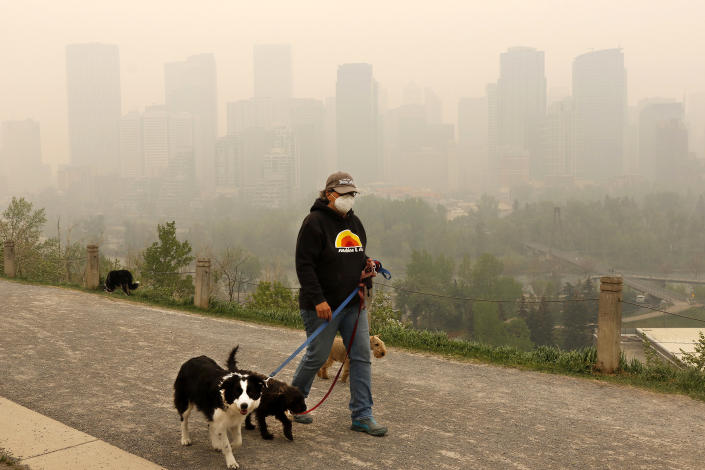
High temperature records fell by the dozen this week as western Canada continued to suffer in a prolonged, scorching heat wave.
“This is a very unusual pattern. We often don’t see these types of patterns set up this early in the year. We see these patterns in the summer,” said Terri Lang, a warning preparedness meteorologist for Environment and Climate Change Canada.
It can take months for scientists to determine whether a particular weather anomaly is the result of climate change and the heating of the atmosphere by the burning of fossil fuels. But Lang said the events fit with what climate scientists have predicted for western Canada.
“It is consistent with what the science of climate change is telling us — that the climate’s warming, that temperatures are getting warmer and drier early on in the year and that warming temperatures lead to more forest fires,” she said.
The “omega block” pattern was established in late April and early May, Lang said. The pattern — a massive block of high pressure that resembles the Greek letter it is named for — has continued to sit over the region for weeks, sending temperatures soaring into record-breaking territory in early May.
Daily temperature records have been broken with regularity in Alberta and other provinces since the beginning of the month.
“Last weekend was definitely anomalous, especially for May,” said Kayla Mazurkiewicz, a meteorologist at the National Weather Service in Seattle, who noted that the high pressure system has remained centered over western Canada. “That pattern was directly over that area. That’s why they’ve gotten the brunt of it.”
Nathan Gillett, a research scientist with Environment and Climate Change Canada who contributed to that research, said what’s happening this month is an “extreme event” but less so in comparison to 2021. Gillett said researchers were considering a new, detailed climate attribution study of the recent heat wave.
“The risk of these kinds of heat waves everywhere has been induced by human-caused climate change,” Gillett said.
The wildfires could affect global energy prices. Wildfires forced some Canadian shale operators to halt work this month, according to Rystad Energy, an independent energy research firm. Rystad estimated that at least 240,000 barrels of oil could not be pumped each day because of outages. Production of 2.7 million barrels of oil each day is within areas in “very high” or “extreme” wildfire danger rating zones, according to a special market update from company Vice President Thomas Liles.
The fires are causing air quality problems. In Calgary on Wednesday, the air quality was rated 10+, meaning it topped the risk scale used by Canadian authorities.
In the meantime, the heat was scrambling ecosystems in other areas of Canada. In British Columbia, the warmth prompted a rapid melt-out of mountain snow. That left officials dealing with flood and fire evacuations at the same time.
The weather is predicted to remain hot and dry in long-term forecasts, Lang and Gillett said.
“We don’t see an end in sight,” Lang said.
0 Likes
